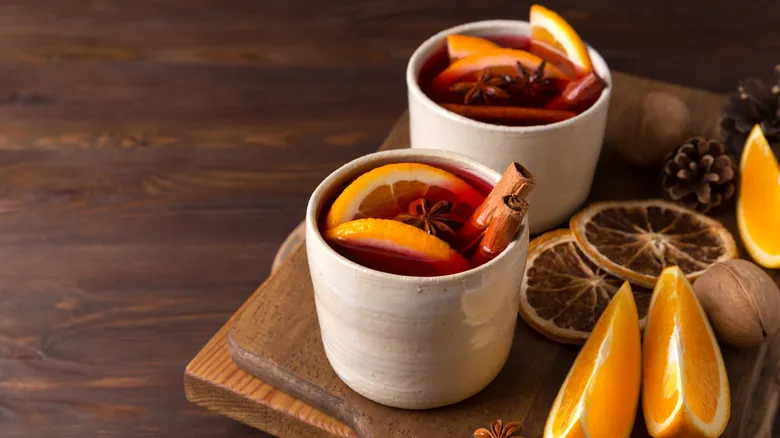Bold, fruity red wines work best

To evoke the ruby elixirs of Christmases past, your first step in the recipe process should be to select a red wine. Corey Garner from The Federalist suggests choosing a wine that is bold yet possesses a touch of juicy sweetness to enhance the spices you'll be adding later. The ideal wine for mulled wine should lean towards the drier side, as mulled wines typically include sugars, but it should still have a fruity essence that avoids becoming overly sweet. "Fruit-forward and not excessively tannic," Garner advises, is the way to go. "Consider notes of dark purple or red fruits."
While it may be tempting to grab any red bottle you find on the shelf, are there particular varietals that can elevate your cocktail? The experts at Wine Enthusiast recommend the earthy nuances of a Pinot Noir or the berry-rich Grenache, while Wine365 suggests a Chianti to add a unique character to your concoction. Alternatively, you could follow Garner's suggestion of the classic Cabernet, which will provide a balanced blend of sweetness and spice. Nancy Kantz from Folino Estate champions the use of a robust Chambourcin for mulled beverages, a variety often found in blended red wines.
Don't feel pressured to buy the fanciest bottle

While the holiday season is all about generosity and giving, there's no need to overspend on wine for mulling. It simply isn't necessary. Everything will be infused with cloves and citrusy scents, and the unique qualities of a fine wine will be overshadowed by the spices. This is why wine expert Corey Garner stresses the importance of balancing quality and value when selecting a wine. There’s a time and place for opening a rare Cabernet, and even the most knowledgeable sommeliers understand that it’s not suited for a communal holiday punch.
That said, the quality of your wine does matter to some extent. An open bottle left out for a month won’t bring joy to anyone, even if it’s enhanced with various ingredients. What’s important is choosing a red that is fresh and enjoyable to your taste, and it doesn’t have to break the bank. The market is filled with affordable wines that have a high alcohol content, so finding a good option for your winter concoction won’t likely strain your budget. Keep this in mind when it’s time to buy your mulling supplies. Set a budget for yourself and resist the temptation to splurge on that Zinfandel.
Experiment with the fruits
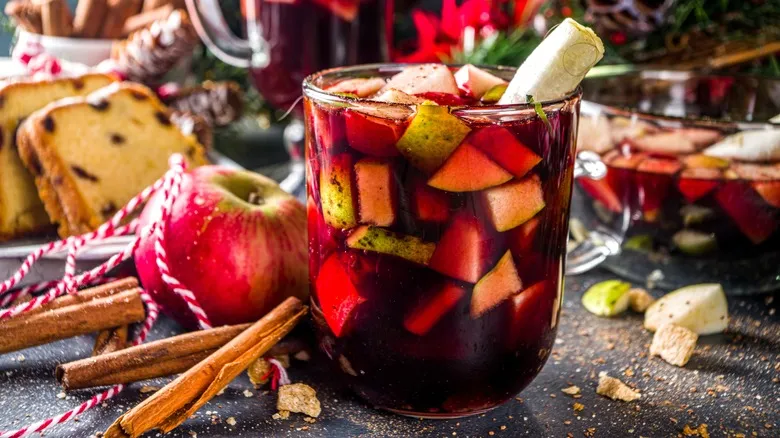
The fruit-forward complexity of the alcohol is essential, but it’s just one aspect that makes mulled wine perfect for the holidays. Oranges, whether cut into slices or peeled, add a delightful zing and brightness, and they also serve as lovely decorations. To truly embrace the festive spirit, consider adding even more fruits to your spiced wine. Unlike many cocktail recipes, the adaptable nature of mulled wine allows for a wealth of creative options. Chopped apples or pears make excellent additions, enhancing the holiday vibe while providing an extra burst of fruitiness. For a touch of tartness, Nancy Kantz from Folino Estate Winery suggests that juicy pomegranates are a fantastic choice.
Don’t hesitate to expand your citrus selection beyond just oranges. Many recipes incorporate lemon or lime to elevate the aroma. However, if you find these sour fruits too intense, clementines offer a milder, zesty alternative, as noted by Corey Garner. Dried fruits, such as figs or raisins, naturally complement the tartness of red wine and absorb the alcohol as the mixture simmers.
Use the freshest whole spices

The spice cabinet is an invaluable resource for any home cook who takes their culinary skills seriously (or for those preparing a holiday cookie platter for Santa, complete with pumpkin pie spice). However, when it comes to your winter cocktails, it's essential to use whole spices instead of ground ones. According to Corey Garner from The Federalist, this approach results in a punch that boasts a purer, more robust flavor and offers a cleaner finish on the palate. After all, it would be disappointing to take a sip and encounter gritty bits of spice, wouldn’t it?
As for specific measurements, Garner recommends starting with a small amount of spice to avoid overwhelming your drink. For those new to mulling wine, she suggests a straightforward formula: "I typically add three cinnamon sticks and five of each additional spice per bottle of wine," she advises. Fill your bowl with the traditional assortment — cinnamon sticks, star anise, cloves — or feel free to get creative and enhance the classic ruby concoction with other spices. Garner particularly enjoys allspice and nutmeg, and for an extra touch of luxury, she suggests using whole vanilla pods, which impart a "smooth, gourmand aroma."
Assemble a spice sachet to easily infuse your wine

When it comes to mixology, adding whole star anise pods or bay leaves is a breeze. However, dealing with the floating bits in your bowl once it's finished can be a hassle, especially if you lack a strainer. A clever way to keep your drink free from sediment is to make a small sachet. This involves wrapping your chosen spices in cheesecloth, allowing them to infuse the mixture as needed. It's akin to a teabag, but designed for wine, releasing delightful ginger-cookie scents that will fill your kitchen with a bakery-like aroma. Corey Garner and Nancy Kantz shared with Chowhound that this method minimizes mess and simplifies cleanup. "I often place the spices in cheesecloth or a spice bag, so I don’t have to fish out each individual spice once it’s done," Garner explains.
After combining your sugars, fruits, and preferred wine, just drop in the spice bundle and let it steep. You can remove it from the pot once it reaches your desired flavor. If you like a more robust spiced wine, Garner recommends letting it steep for about an hour to fully extract the flavors.
Making a syrup locks in the spices
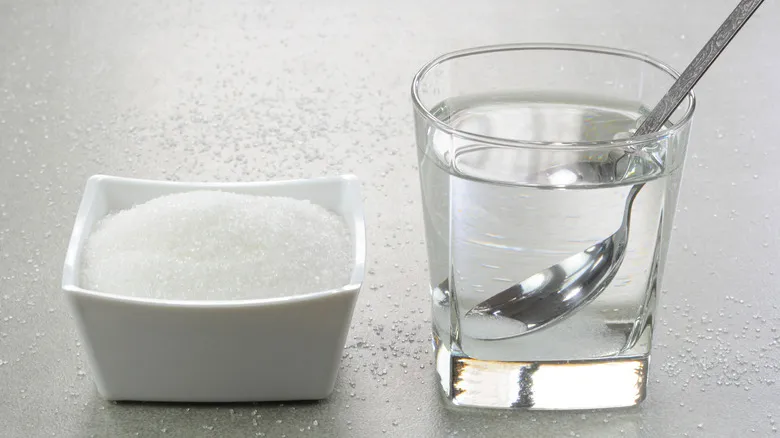
Honestly, making mulled wine is incredibly appealing due to its simplicity: just toss the ingredients into a pot, let it simmer, and voilà! The holiday spirit is in the air. However, one thing to be cautious about is the risk of evaporating too much wine, which is why preparing a simple syrup for your mulled wine is so useful. It captures the essence and complexity of your drink, enhancing the aroma without depleting your wine supply.
Donal Skehan, a TV chef recognized for his collaborations with Jamie Oliver, demonstrates his syrup-making process in a YouTube video on Oliver's channel. He starts with caster sugar, then adds a variety of citrus peels, spices, and a generous amount of red wine. He simmers the mixture, stirring until it reaches a thick, jam-like consistency (about five minutes), before adding the rest of the red wine to complete the batch.
There's really no reason to buy simple syrup from the store since it's so easy to make at home. All you need is water (preferably hot) and sugar, along with any additional ingredients you want to customize the flavors.
Sweeteners balance out the bitterness
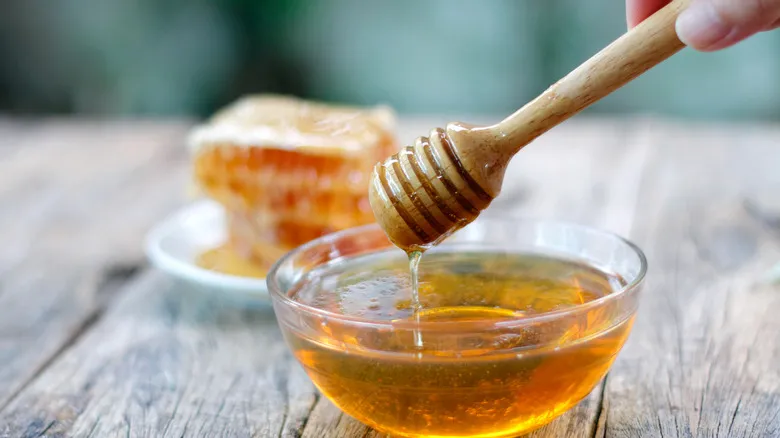
Adjusting a fruit-forward wine with baking spices will naturally create a "sweet" drink. So, why add more sugar? Even in cocktail form, wine has a decent level of acidity from fermentation, and its flavors become more pronounced as it heats up. You want your mulled wine to be as comforting and rich as possible, and adding a sweetener is one way to ensure your batch remains enjoyable to sip.
Like the ancient Romans who first created this drink, Garry The Sommelier on YouTube suggests enhancing his wine with a teaspoon of honey (crystallized honey works well too!). However, don’t feel restricted at this stage. If honey isn’t on hand, consider drizzling in your favorite real maple syrup or using traditional sugar (both brown and granulated sugars are great options, so choose what you like best).
You can certainly adjust the sweetness to suit your palate, but estimating the amounts could lead to a mulled wine that tastes overly sweet and unbalanced. A good guideline is to use about 2 to 3 tablespoons per pot.
Don't forget to add more booze

A delightful experience is assured when enjoying this marvelous mix, but why not enhance the punch a little with something stronger? Adding spirits can give your drink an exciting twist, as the wine, while simmering on the stove, loses some of its alcohol content that you would otherwise consume. "Brandy adds a lovely depth," suggests Corey Garner, and that's a great tip since the spirit complements the cocktail's foundation beautifully. Other reliable options to consider include port or Cointreau for a hint of citrus. Spiced rum also works well, intensifying the peppery notes.
While adding alcohol certainly elevates the enjoyment, Garner cautions against pouring too generously, especially if the wine itself is potent. Larger amounts of liquor in your cocktail can create a stronger effect (particularly if the red has a higher alcohol content), so be mindful of your own and your guests' tolerance levels. It's easy to add more alcohol to a drink, but much harder to dilute it once you've gone overboard.
Craft a milder libation with water

Getting a little tipsy is precisely why partygoers prepare a spicy, warming mug of mulled wine year after year. However, as we noted in the alcohol section, you want to avoid a pounding headache. To reduce the strength of your mulled wine—and perhaps extend the batch for any latecomers at your gathering—it's wise to add some water to the mix. Otherwise, your concoction might end up being too potent.
Renowned pastry chef Hanbit Cho shares this essential tip for making a batch, suggesting the addition of 250 ml of water, or one cup in total. His reasoning, as he explains in a YouTube video, is that the liquid will evaporate due to the heat, concentrating the wine's flavor. By incorporating water, the mixture can gradually come to a boil without quickly evaporating while it sits on the burner. Additionally, using water as a "filler" will increase the overall volume of mulled wine, ensuring you won’t have to crack open an extra bottle too soon in the evening.
A gentle simmer draws out peak aromas and flavors
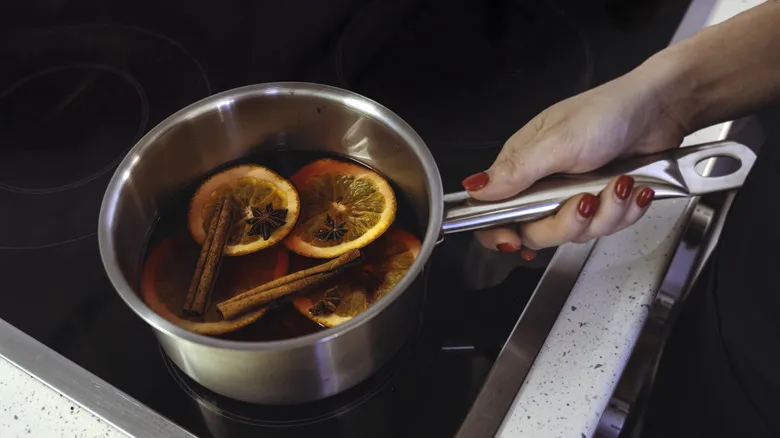
You may feel inclined to turn up the heat on your mulled wine, but rushing the process could ruin your batch entirely. "The key point here is to avoid boiling it," says winemaker Corey Garner, who explains to Chowhound that boiling mulled wine can compromise its flavor. "This can lead to a bitter taste from the spices and cause the alcohol to evaporate," he notes. Remember, alcohol starts to dissipate at 173 degrees Fahrenheit, so if the temperature goes any higher, you risk losing it. A gentle simmer is essential to fully release the delightful, earthy aromas, and if you want to impress your friends and family with a standout drink, it's important to keep the heat low.
That said, a bit of bubbling is necessary to initiate the infusion process, so Garner recommends setting the burner to medium ("just below simmering"). Just be careful not to go beyond this point, as the wine can burn if the heat is too intense. Once the liquid starts to bubble, you can lower the heat to maintain a steady temperature. The goal here is to allow the wine to marinate thoroughly without splattering or scorching. Since annual gatherings happen only once a year, you definitely don’t want your celebration to be spoiled by a burnt beverage.
Serve your mulled wine in a slow-cooker

A cozy mug of mulled wine truly stands out at any festive gathering, and like any celebration, the more, the merrier. If you're planning to host a larger group to join in the festivities, it’s a smart idea to prepare your brew in a slow cooker (the preferred tool of our wine expert, Corey Garner). Using a Crock Pot is effortless and convenient, with automatic settings that eliminate the need for constant monitoring. Another advantage of using the Crock Pot is its compact size, allowing you to free up space on your stove for other dishes you may be preparing for the evening.
While hot cocktails like mulled wine are quite versatile, there are still some guidelines to follow, even if you choose the set-it-and-forget-it method. According to Garner, simmering for two to three hours on low heat will yield the best results. "Once it reaches your desired infusion level, you can switch it to 'warm' and remove the spices to prevent over-infusing," Garner recommends. As long as the liquid isn’t burnt and has a pleasantly aromatic scent (in a good way!), it’s likely ready for you and your guests to enjoy on Christmas Eve.
Festive presentation will wow your guests
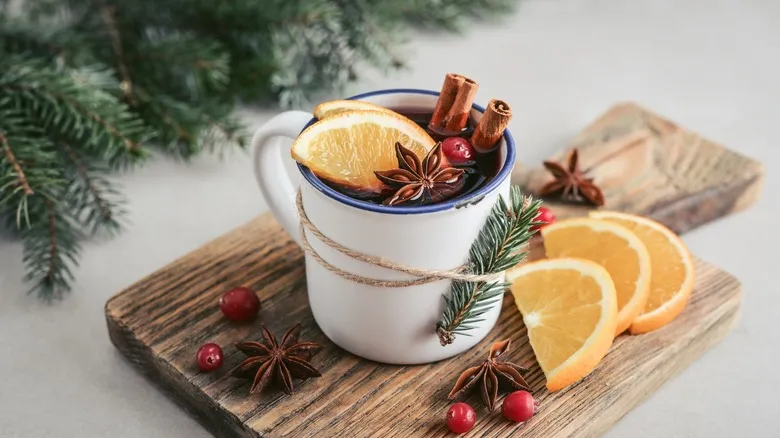
Creating the most delightful mulled wine is undoubtedly an art, but it’s also a memorable experience. Serving your drink in elegant glassware adorned with thoughtfully chosen garnishes is an essential part of the process. Winemaker Corey Garner shares some of her favorite touches to enhance the occasion. "I prefer a clear, footed mug because it showcases the stunning red wine and festive garnishes," Garner explains. When selecting cups, it's crucial to choose materials that can withstand high temperatures, like ceramic, to avoid any burns while enjoying the holiday spirit! Another essential tip for the perfect hot punch is to warm the mug before serving—just fill it with water and heat it in the microwave until it’s steaming.
When it comes to decorating the mug, you can use the same garnishes that flavored your brew. The stewed orange peels can be swapped out for fresh rinds, along with a star anise pod and a picture-perfect cinnamon stick. Nancy Kantz from Folino Estate Winery recommends pomegranates and dried slices of blood orange, while Garner suggests adding cranberries for a playful touch of festivity. A sprig of rosemary adds a lovely herbal note, enhancing the aromatic experience.
Recommended
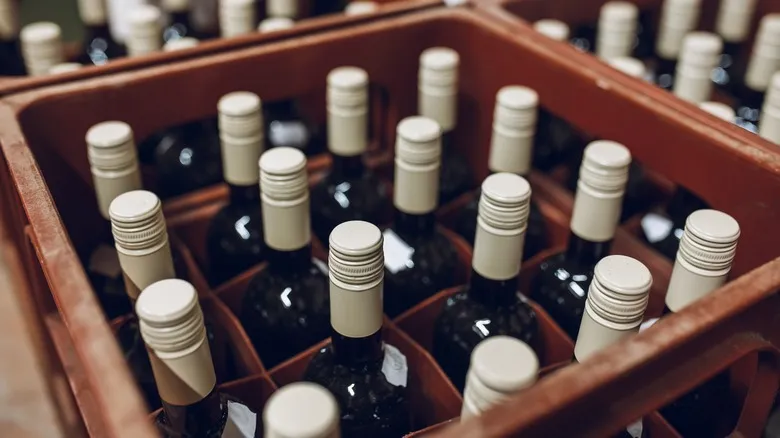
How Many Bottles Of Wine Are In A Case And Why It's Worth It To Buy One

German Vs American Beer: What Makes Them Different?

What Makes Spumante Wine Different From Champagne?

What Type Of Brew Is An Oktoberfest Beer?
Next up

